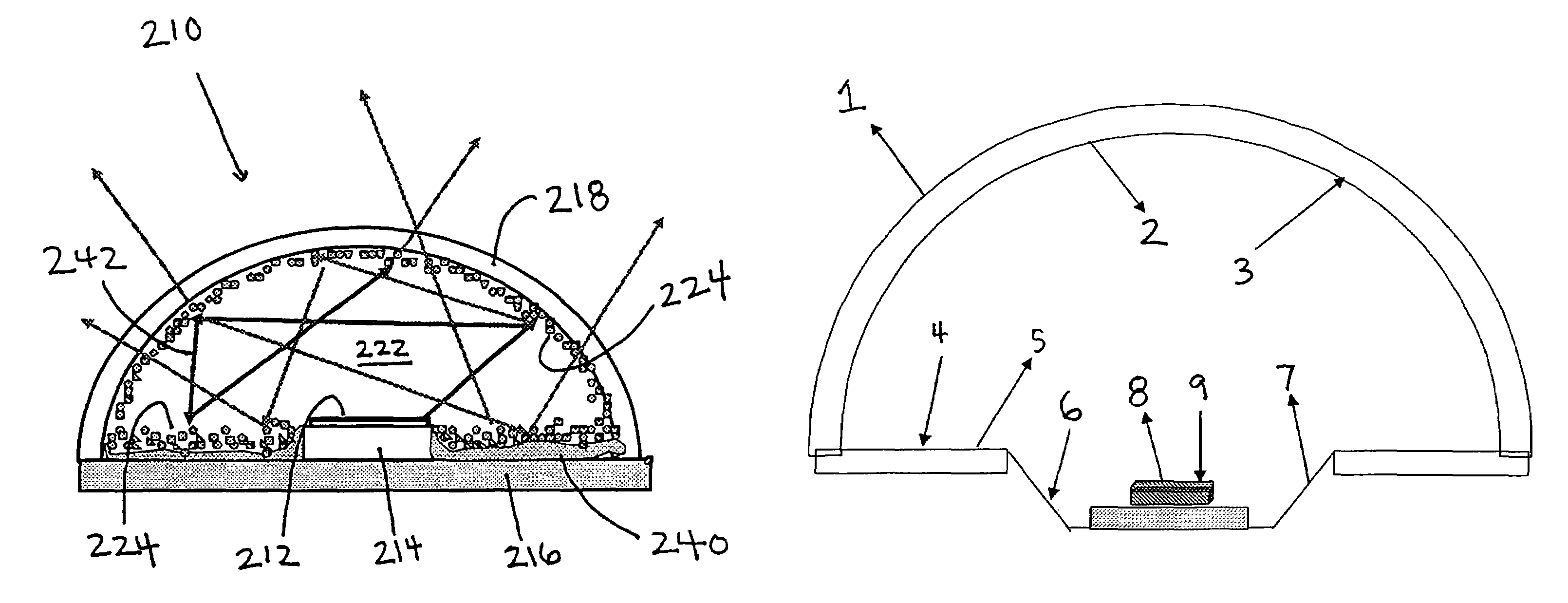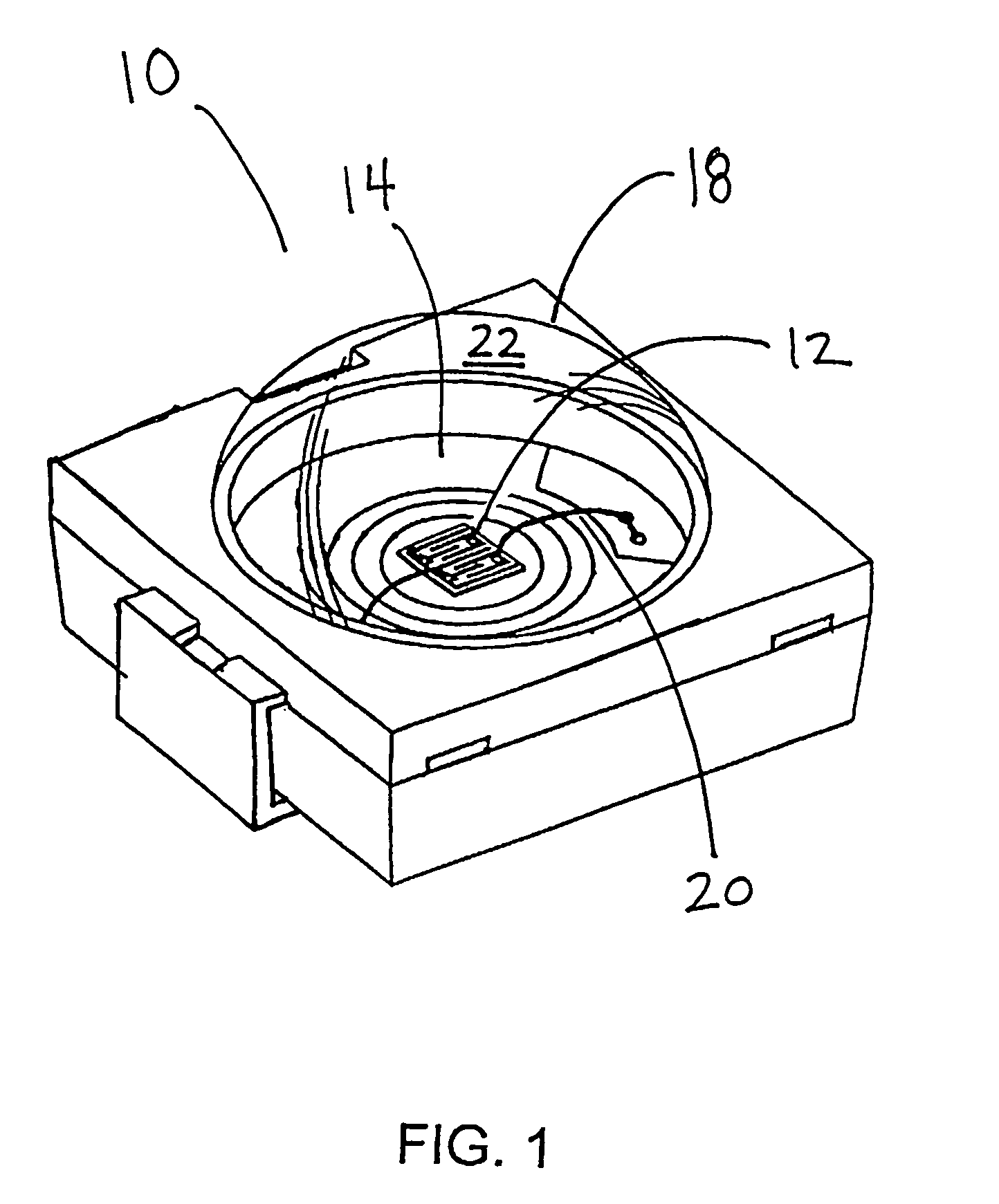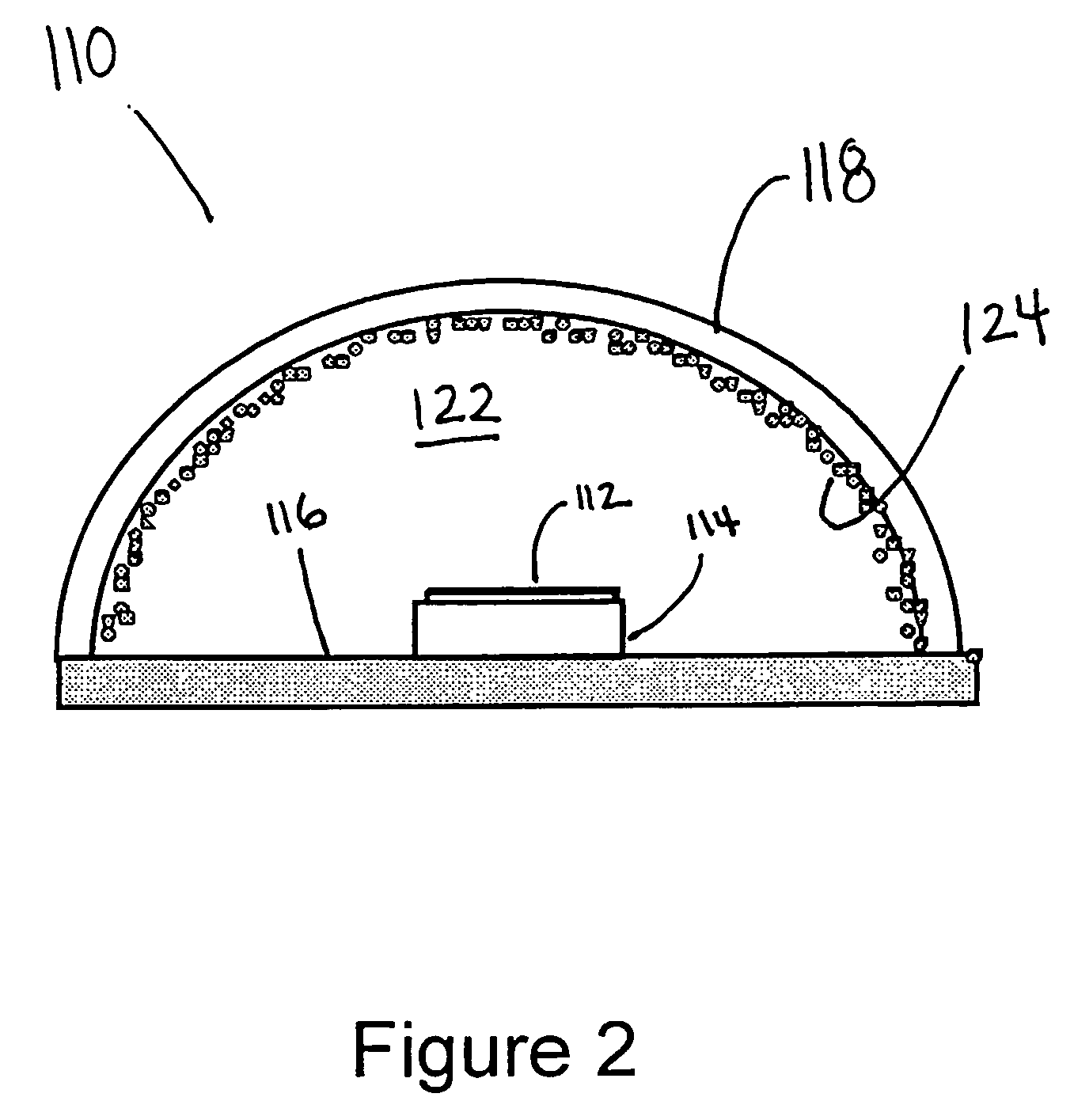Coated LED with improved efficiency
a technology of led chips and coatings, applied in the direction of discharge tubes luminescnet screens, semiconductor devices for light sources, lighting and heating apparatus, etc., can solve the problems of limiting the package efficiency, different colors for different parts, color separation in the beam pattern, etc., to reduce the blue flux density (w) of the led chip and the effect of reducing the color shift of the led chip
- Summary
- Abstract
- Description
- Claims
- Application Information
AI Technical Summary
Benefits of technology
Problems solved by technology
Method used
Image
Examples
Embodiment Construction
[0032]Although the discussion below with respect to embodiments of the present invention is directed to LEDs for convenience, it should be understood that the invention relates to the use of any light emitting semiconductor. With reference to FIG. 1, a conventional LED assembly is shown generally at 10. The LED assembly includes an LED chip 12 mounted on a bottom surface 14 of the LED assembly. The LED chip 12 emits radiation (typically UV or blue light in a white light LED). A lens 18 made from a transparent material surrounds the chip 12 and bottom surface 14. Two lead wires 20 connect the chip 12 to a source of power. Filling the space 22 between the lens and the chip 12 is typically an epoxy or other transparent material (not shown). Intimately dispersed within the epoxy are phosphor particles (not shown) that absorb at least a portion of the light emitted by the chip 12 and converting it to a different wavelength.
[0033]While the performance of such LEDs can be adequate for some...
PUM
 Login to View More
Login to View More Abstract
Description
Claims
Application Information
 Login to View More
Login to View More - R&D
- Intellectual Property
- Life Sciences
- Materials
- Tech Scout
- Unparalleled Data Quality
- Higher Quality Content
- 60% Fewer Hallucinations
Browse by: Latest US Patents, China's latest patents, Technical Efficacy Thesaurus, Application Domain, Technology Topic, Popular Technical Reports.
© 2025 PatSnap. All rights reserved.Legal|Privacy policy|Modern Slavery Act Transparency Statement|Sitemap|About US| Contact US: help@patsnap.com



